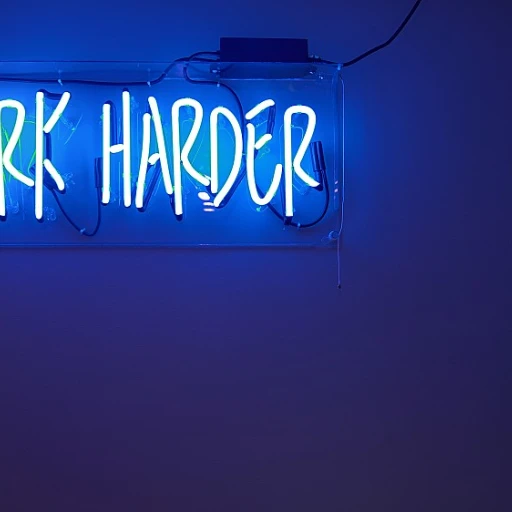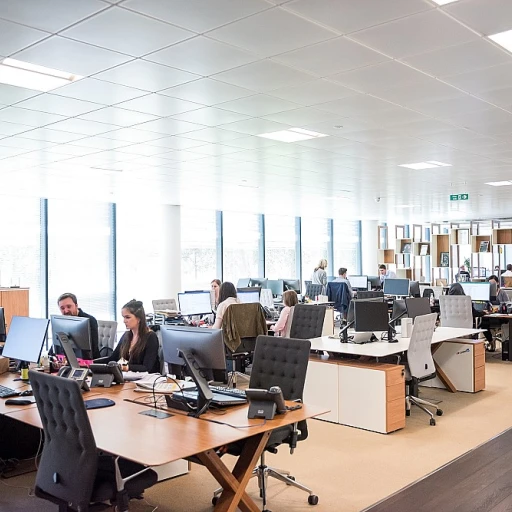Understanding the Importance of a Mid-Year Workforce Evaluation
Recognizing the Role of Mid-Year Evaluations in Workforce Management
A mid-year workforce evaluation is a crucial aspect of an effective performance management system. As the year progresses, both employees and managers benefit from taking a step back from day-to-day tasks to assess performance and course-correct, if necessary. Mid-year reviews provide an opportunity to ensure goals set at the beginning of the year align with the company's evolving needs and ambitions.
Conducting a workforce evaluation at this mark allows businesses to engage in meaningful conversations around goal progress, employee development, and overall performance. This period is an ideal time for employees to receive feedback and guidance on their performance, ensuring their year-end reviews are largely positive and reflect significant progress goals.
Moreover, employee mid-year check-ins can significantly boost employee engagement, as they facilitate cross-functional team discussions and provide a chance for real-time performance feedback. The mid-year check serves as a time to review examples of past performances and assess what areas may require improvement or additional resources.
For managers, the mid-year evaluation is a time to reinforce better engagement and direct their teams towards achieving set goals. They can identify and address skill gaps by informing employees about available training opportunities and resources. This proactive approach helps maintain an agile workforce ready to adapt to the year's second half.
Furthermore, understanding the distinctions in evaluations at different times of the year can help to avoid any unintentional disparities. It's crucial to consider the differences between disparate treatment vs disparate impact to ensure fairness and equity in workforce reviews. For further insights into this, you might explore
exploring evaluation distinctions.
Ultimately, embracing mid-year evaluations not only enhances the structure of performance management but also ensures that employees and managers work actively towards achieving their annual objectives. With the right focus and strategic insights, this process can be an invaluable tool for continuous performance improvement across the organization.
Key Metrics to Assess During Your Mid-Year Check-In
Essential Metrics for Maintaining Workforce Continuity
When it comes to maximizing your workforce's potential, understanding key metrics is pivotal during a performance review. A thorough mid-year evaluation provides a comprehensive opportunity for employees and managers to review progress goals set earlier in the year.
- Performance Progress: Check-ins offer a chance for continuous performance evaluation, focusing on individual employee growth and team development. Having real-time conversations about goal progress fosters a better understanding of achievements and challenges.
- Employee Engagement: Employee engagement levels are critical to ascertain. If employees are disengaged, their performance and contribution to team success could be hampered.
- Skill Development: Mid-year reviews allow analysis of cross-functional skill sets, helping gauge what further training might be needed. This process ensures the team can adapt to evolving work demands.
- Feedback Inclusion: Incorporating feedback into year reviews is beneficial for both managers and employees. Constructive insights facilitate an environment of openness and long-term growth.
Regular year check-ins, examining metrics, and performance management practices drive a proactive approach, enabling organizations to yield better year performance results by nurturing a supportive and responsive work environment. To explore more about tackling management challenges in workforce planning, check out this
comprehensive guide.
Engaging Employees in the Evaluation Process
Fostering Employee Engagement in Evaluations
Engagement is a crucial part of any workforce evaluation, particularly during the mid-year checks. Engaging employees effectively can turn evaluations into powerful development tools rather than mere administrative tasks.
To start, open the lines of communication with a focus on transparency. Regular conversations concerning performance and development keep employees in the loop, alignment with year goals can be regularly assessed through check-ins, thus reducing the pressure of year reviews. These interactions cultivate a culture of continuous performance improvement and help employees understand how their work contributes to organizational objectives.
Providing feedback is a vital element in keeping employees engaged. Tailor real-time feedback to acknowledge accomplishments and highlight areas for growth. The specificity of feedback can greatly enhance employee growth, understanding clear paths for improvement and allowing mid-year performance correction.
Constructive feedback sessions encourage cross-functional collaboration, where managers should consider incorporating insights from team members who can offer different perspectives. Employees who see that their feedback leads to tangible changes often participate more willingly, increasing their trust and helping align goals set with actual performance. For greater impact, encourage employees to voice their insights during these reviews, allowing them to be active participants rather than passive recipients.
Moreover, fostering an environment of two-way feedback not only motivates employees but also helps managers adjust strategies effectively, ensuring that they better meet individual and team expectations. This initiative drives engagement, with every employee feeling invested in their personal and organizational goal progress. For crafting effective strategies for high-end workforce performance, visit this
resource to gain deeper insights.
Regularly reviewing goals and progress can lead to significant transformations if approached with an open and positive mindset towards continuous improvement. When integrated seamlessly with other key metrics, these efforts ensure that the mid-year review becomes not only a snapshot of current performance but a dynamic conversation on future growth trajectories.
Addressing Skill Gaps and Training Needs
Identifying Skills Gaps and Addressing Training Requirements
In the quest for achieving set goals, uncovering skill gaps is essential for employee growth and overall team success. Performance review conversations at this crucial mid-year checkpoint offer insight into where employees and teams may be falling short, and what particular skills they need to develop. Real-time feedback during these reviews can be invaluable.
- Understanding Performance Deficits: When you review performance in these mid-year check-ins, it is key to identify areas where progress toward goals is not on track. Managers should conduct these performance reviews by asking relevant questions to accurately determine where skills are lacking.
- Emphasizing Continuous Development: Integration of continuous performance management ensures that your team is always evolving with the organization’s needs. Establishing regular feedback loops can help tune performance strategies and keep the team aligned with year-long objectives.
- Cross-Functional Development Programs: Encouraging employees to acquire skills from different departments enriches their expertise and boosts flexibility within the team. It could be productive to have targeted training sessions or workshops that address these needs.
- Mapping Skill Improvement to Business Goals: Every year review should connect skill enhancement initiatives with long-term company goals, so employees understand their contribution’s value. These conversations give employees the emotional engagement they need to commit to their personal and professional development fully.
- Monitoring Skill Development Progress: Once skill development programs are in place, it’s important to consistently review progress goals. Regular follow-up helps in ensuring these initiatives are effectively bridging the identified gaps and facilitating employee engagement.
Running year reviews is an opportunity to not only inspect goals and performance but also to build a strong foundation for employee growth by providing them with the tools they need to succeed.
Adjusting Workforce Strategies Based on Evaluation Findings
Refining Workforce Strategies for Improved Outcomes
Adjusting your workforce strategies post-evaluation is a crucial step in aligning your team's performance with organizational goals. This process involves more than just minor tweaks; it requires a comprehensive approach to address any identified issues and capitalize on opportunities.
To start with, utilize insights from your evaluations to refine strategies. Consider:
- Real-Time Feedback Integration: Implement a system for continuous performance feedback to keep employees informed about their progress. It's essential for mid-year check-ins and helps bridge the gap between annual reviews.
- Goal Realignment: Ensure that employee goals set at the beginning of the year are still relevant. Adjust them to align better with any change in organizational priorities or market conditions.
- Skill Development Focus: Address skill gaps identified during your evaluations. This could involve creating comprehensive development programs that cater to both individual and team needs, fostering overall employee growth.
- Strengthening Cross-Functional Collaboration: Encourage better communication between different teams. Breaking down silos can enhance creativity, problem-solving, and performance.
Implementing these strategies helps not only in performance management but also in fostering a culture of continuous improvement and employee engagement. Regular progress reviews can offer valuable insights to managers and employees, facilitating better conversations and yielding a more dynamic year-check process.
Conversations around these adjustments should involve employees and managers to maximize engagement and buy-in, ensuring that everyone is on the same page as the year progresses.
Leveraging Technology for Effective Workforce Evaluation
Harnessing Technology to Enhance Workforce Evaluation
In today’s fast-paced business environment, leveraging technology for workforce evaluation can significantly amplify an organization’s ability to assess employee performance. With software solutions incorporating real-time data and feedback mechanisms, managers can gain clearer insights into year reviews, mid-year check-ins, and ongoing performance management.
Investing in an efficient performance management system facilitates continuous performance reviews. These systems are designed to track goal progress and offer year-round insights into individual and team achievements. With the use of technology, real-time insights become readily available, which helps optimize employee engagement. Here’s how technology can provide a strategic advantage in workforce assessments:
- Real-Time Feedback: Platforms allow for immediate performance feedback and reviews, making conversations more relevant and actionable. This immediacy helps in tracking goal progress effectively across the year.
- Automated Data Collection: Technology-enabled check-ins automatically gather data on employee progress and development goals set earlier in the year.
- Cross-Functional Insights: Comprehensive tools provide insights across various teams, allowing managers to conduct a holistic evaluation of employees' work and development opportunities.
- Enhanced Communication Channels: Platforms streamline communications between employees and managers, supporting better conversations and performance review processes.
By utilizing advanced tools, organizations can better align evaluation processes with their strategic objectives, enabling more informed decision-making. It’s crucial that these platforms are integrated seamlessly into the workflow, enhancing both efficiency and employee growth.
Technology is revolutionizing the way performance reviews are conducted, shifting from a time-consuming task to an integral part of strategic workforce planning. Utilizing these tools effectively can lead to improved goal achievement and foster ongoing employee development.
-teaser.webp)














